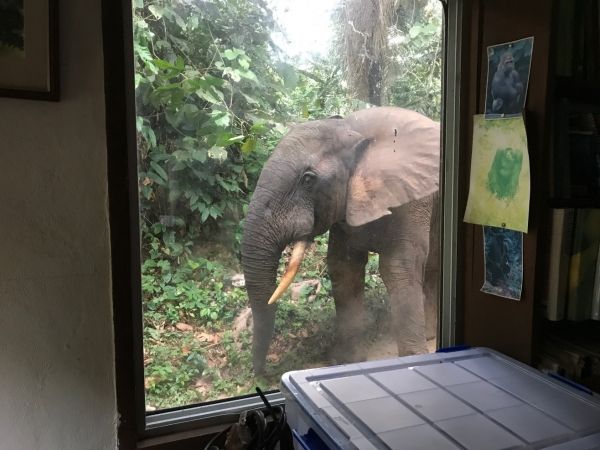“STOP RIGHT THERE!” - came the warning just as I was leaving the research building. Eric, peering out of an adjacent doorway whispered “He’s right around the corner next to you.”
‘He’ was ‘Choco’, a young bull forest elephant (Loxodonta cyclotis) who was regularly coming out of the surrounding forest to eat fruits and tender leaves in the Bomassa field station, headquarters for the Nouabalé-Ndoki National Park in northern Republic of Congo. This was in the fall of 2017 while Daniela Hedwig and I from the Elephant Listening Project (ELP) were in Bomassa, training our two Congolese collaborators about passive acoustic monitoring. Choco was mild-mannered and always drew everyone out from their work-places to enjoy watching such a magnificent animal from up (fairly) close. However, on my most recent trip with Liz Rowland, we were told that Choco was probably poached sometime during the intervening months, as he has not been seen since late in 2017. This just emphasizes the terrible toll that ivory poaching is taking on forest elephant populations and why we are working hard to find ways that we can better protect this species through the use of acoustic tools.
A few hundred wing-flicks of an African Grey Parrot to the east of us, our grid of acoustic sensors stretches across 1250 square kilometers of rainforest—the largest such monitoring grid anywhere in tropical regions. The grid was designed to incorporate both protected national park and parts of an adjacent logging concession. This layout should give us the landscape diversity to explore elephant preferences for different habitats, how movements change with exposure to anthropogenic disturbance, and how poaching activity (i.e. gunshots) relates to both of these.
Continue reading at Cornell University.
Image via Cornell University.


